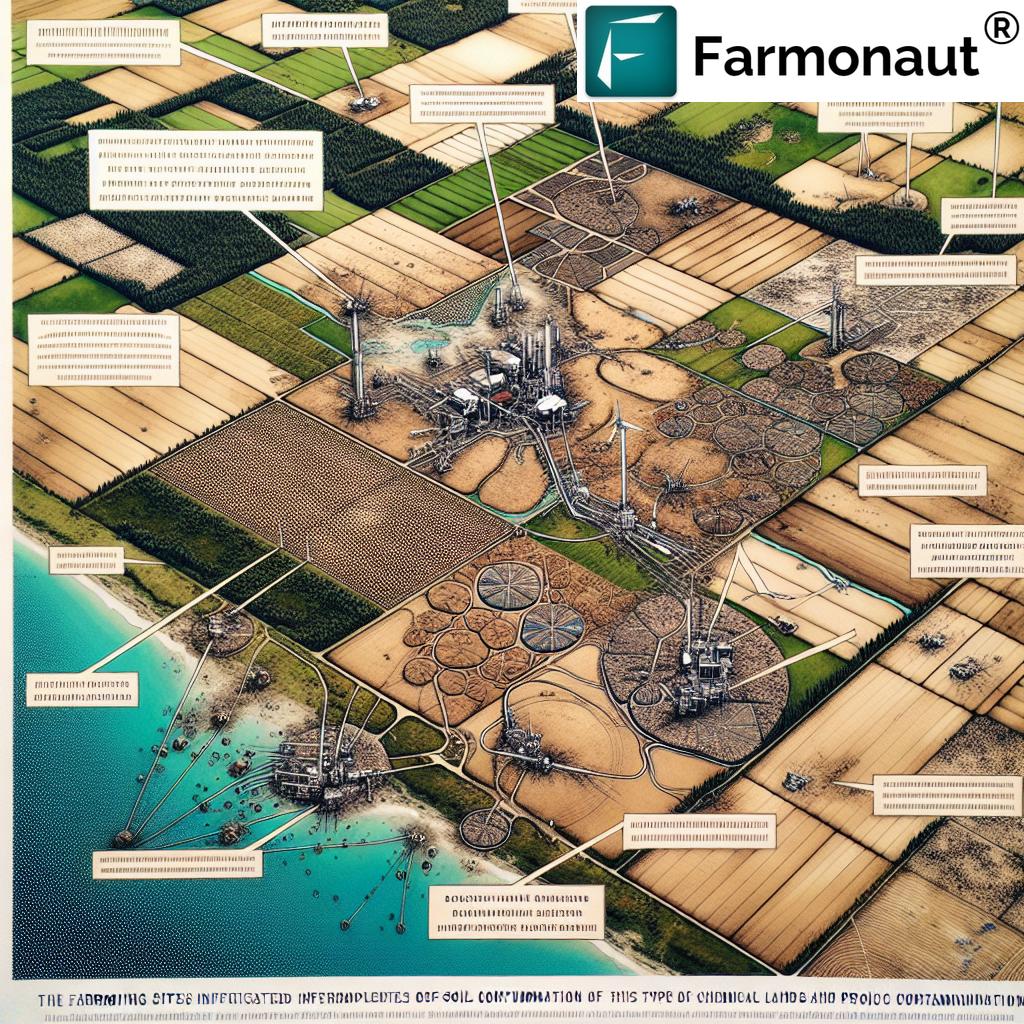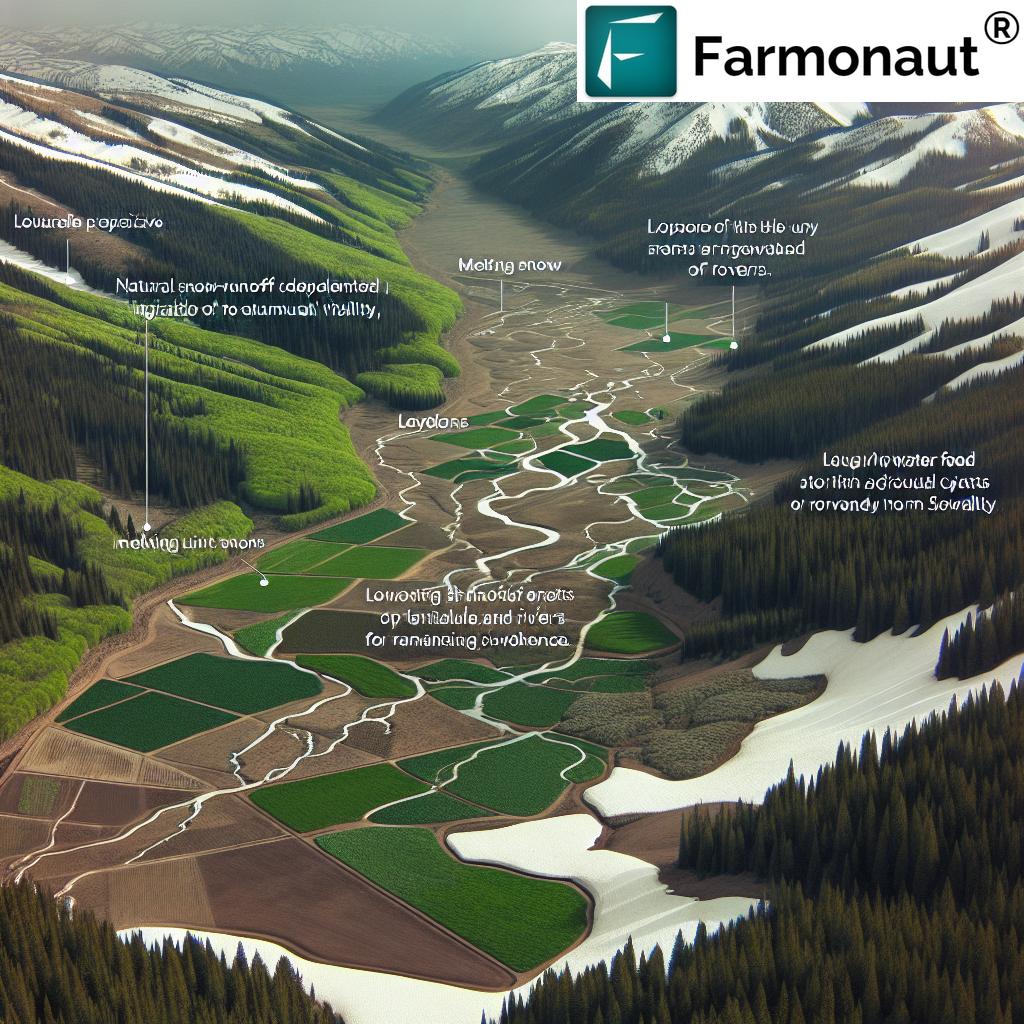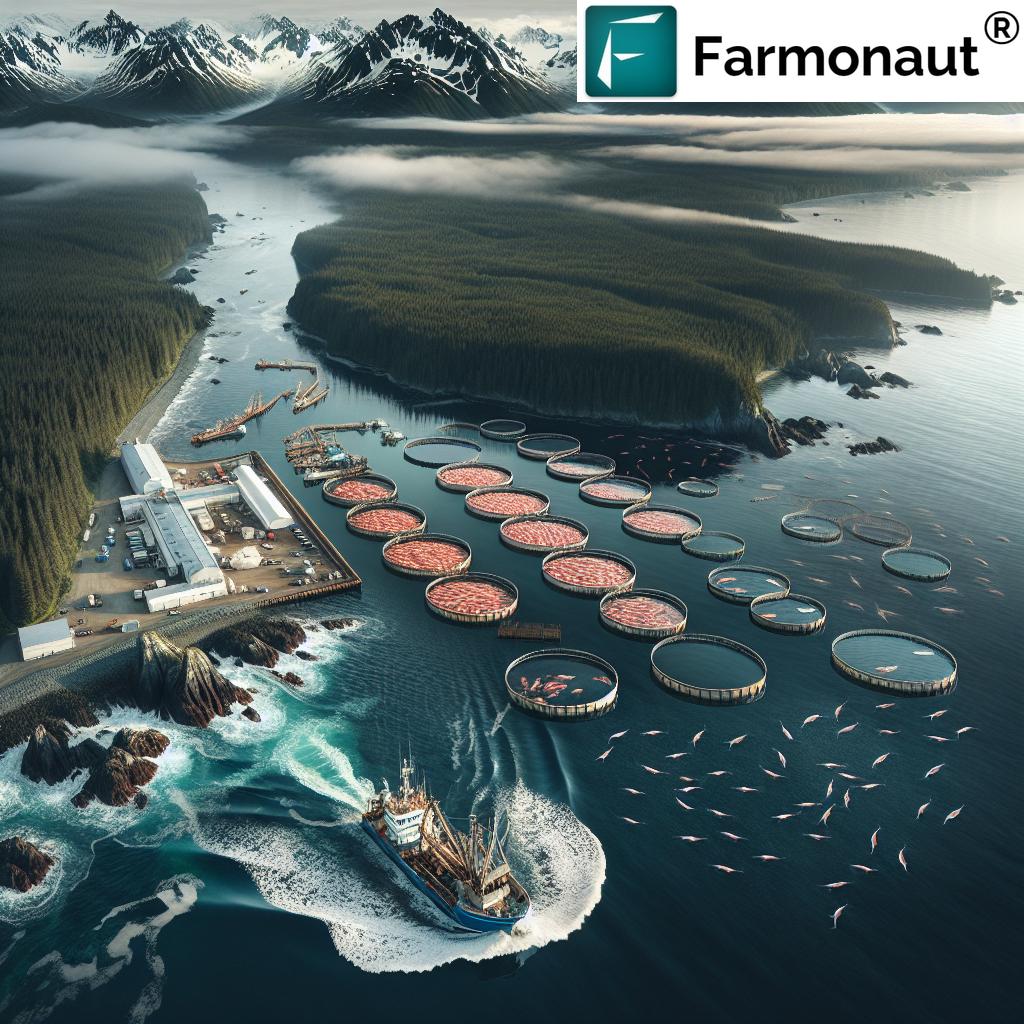PFAS Soil Contamination: 7 Shocking Maine Solutions!
“Over 700 Maine sites are contaminated with PFAS, threatening local crops and water supplies.”
Summary: PFAS Soil Contamination in Agriculture, Farming, and Forestry — An In-Depth Analysis
Per- and polyfluoroalkyl substances (PFAS), known as “forever chemicals,” represent a group of man-made compounds celebrated for their remarkable resistance to heat, water, and oil. First introduced in the 1940s, these chemicals have now become environmental hazards due to their extreme persistence in the environment and accumulating impact on agriculture, farming, and forestry. From industrial sources to contaminated water and biosolid application, PFAS infiltrate our soil, putting our crops, livestock, food safety, and water supplies in jeopardy.
In this comprehensive analysis, we examine the sources, pathways, and shocking effects of PFAS soil contamination in Maine and across the United States. We explore critical EPA regulations, state responses, and leading-edge remediation strategies—including biochar, phytoremediation, and more. This blog is a roadmap for sustainable agriculture in the face of contamination.
Understanding PFAS: “Forever Chemicals” in Our Environment
PFAS are a family of over 4,000 distinct per- and polyfluoroalkyl substances, with their most infamous representatives including Perfluorooctanoic acid (PFOA) and Perfluorooctane sulfonate (PFOS). These compounds were celebrated for their utility in firefighting foams, non-stick cookware, waterproof fabrics, and food packaging materials. What sets PFAS apart from other chemicals are their strong carbon-fluorine bonds—the sturdiest in organic chemistry—making them exceedingly persistent in the environment.
- Resist degradation—remaining in soil, water, and plant systems for decades
- Accumulate in crops, livestock, and human tissues
- Enter food chains, threatening both ecosystem and public health
As a result, PFAS contamination in agriculture and related systems has become a top-tier concern for environmental scientists, regulatory bodies, and farmers alike.
PFAS Sources in Farming, Forestry, and Agriculture
Where do PFAS come from? How do these persistent compounds end up in our fields, forests, and food?
Major PFAS Sources in Agricultural Environments
- Contaminated Water Sources:
PFAS often infiltrate agricultural lands through irrigation systems using water contaminated by industrial discharge or firefighting activities.
Examples: Rivers, wells, and reservoirs near industrial sites or urbanized zones can become chronic PFAS sources for cropping and livestock operations.
(farmers.gov)
- Biosolid Application (PFAS Contaminated Biosolids):
Biosolids—nutrient-rich treated sewage sludge—are widely applied as fertilizers. A hidden hazard: these can contain high PFAS levels, transferring polyfluoroalkyl compounds directly into soils and crops.
In Maine and other states, biosolids from wastewater treatment plants have emerged as a chief PFAS source in farming. (farmonaut.com)
- Atmospheric Deposition:
PFAS can travel as airborne particulates, raining down on fields in areas near industrial usage or waste incineration sites, contributing to long-term soil contamination.
- Animal Feed and Grazing:
Livestock exposed to contaminated feed or grazing on PFAS-laden pastures can bioaccumulate harmful compounds in edible tissues, threatening food safety and animal health.
- Sites impacted by firefighting foams, industrial runoff, or sewage sludge often represent PFAS hotspots.
- Atmospheric deposition can contaminate fields miles away from the initial source.
Understanding these pathways is essential for both crafting remediation strategies and advocating for sustainable agricultural practices.
Why Is Maine at the Forefront of the PFAS Crisis?
Maine has become a U.S. epicenter for addressing PFAS contamination in soil and water. Due to historic biosolid fertilizer use and proximity to manufacturing, more than 700 sites have been confirmed as PFAS-impacted, putting local agriculture and forestry at risk.
Key Takeaway: While PFAS sources abound, Maine’s proactive approach to identifying and regulating contamination zones sets the stage for national action and innovative solutions.
PFAS in Soil and Water: Impacts on Crops, Livestock, and Forests
Once in the environment, PFAS follow complex pathways, with profound consequences:
PFAS Impact on Crops
- PFAS Uptake in Plants: Certain species absorb PFAS from soil via root systems, leading to contamination of edible parts.
- Yield and Quality Issues: PFAS may disrupt nutrient cycling and interfere with crop growth, lowering yields and potentially causing stunted or unsafe produce.
- Food Chain Concerns: Contaminated crops pass PFAS on to humans and animals—posing chronic exposure risks.
Soil Health and Forestry Risks
- Soil Microbial Communities: PFAS alter microbial balance, affecting fertility, organic matter breakdown, and plant robustness. (Cornell Soil Blog)
- Timber Ecosystems: While research is ongoing, emerging signs suggest PFAS can harm tree health and diminish timber quality.
Impact on Livestock and Animal Feed
- Animal Exposure and Bioaccumulation: Livestock consuming PFAS-contaminated feed or water can accumulate dangerous levels in their tissues (meat, milk, eggs).
- Food Safety: Consuming animal products can be a major PFAS exposure source for humans.
- Animal Health: Chronic exposure may threaten livestock reproduction, immunity, and growth.
Conclusion? The dangers of PFAS in agriculture extend far beyond a single harvest—they ripple through food webs, threaten local economies, and challenge the resilience of our land.
EPA PFAS Regulations & Maine’s Bold Moves
How are regulators responding?
National Landscape: EPA PFAS Regulation
-
April 2024: U.S. Environmental Protection Agency (EPA) finalized enforceable Maximum Contaminant Levels (MCLs) for six PFAS chemicals in drinking water under the National Primary Drinking Water Regulation.
(farmers.gov) -
Research Initiatives: In September 2024, EPA awarded over $15 million to fund research into PFAS exposure in agricultural systems—exploring the bioaccumulation in plants and livestock, with a focus on solutions like biochar for PFAS remediation.
(epa.gov)
Local Leadership: State of Maine
-
2022: Maine became the first state to ban the use of PFAS-contaminated biosolids as fertilizers in agriculture, setting a precedent for urgent action.
(farmonaut.com) - Connecticut and other states are considering similar bans, highlighting the severity of biosolid-derived PFAS risk.
For Maine farmers, these regulations are both a challenge—to ensure compliance—and an opportunity to lead the way with remediation strategies that protect land for the next generation.
“Biochar can reduce PFAS in soil by up to 70%, offering a sustainable solution for farmers.”
The 7 Shocking Maine Solutions for PFAS Remediation
Maine’s battle against PFAS soil contamination has produced innovative, research-backed solutions—applicable nationwide. Here, we present the seven strategies leading the charge:
-
Biochar Soil Amendments:
Biochar for PFAS remediation involves incorporating specially engineered carbon-rich biochar into contaminated soils.- Mechanism: Biochar’s high surface area adsorbs PFAS, locking them away from plant roots and groundwater.
- Results: Studies indicate up to 70% reduction in PFAS mobility.
- Environmental fit: Enhances soil health and can be made from local agricultural waste, aligning with sustainability goals.
-
Phytoremediation of PFAS:
Some plant species can gradually remove or stabilize PFAS through their roots.- Method: Select and cultivate hyperaccumulator plants (experimental phase for PFAS)
- Benefits: Low-input, eco-friendly, potential for field-scale deployment
- Challenges: Varies by PFAS type, requires more research on Maine-specific conditions
(NCBI)
-
Water Treatment Prior to Irrigation:
Removing PFAS from surface or well water before irrigation prevents new contamination.- Technologies: Reverse osmosis, granular activated carbon filters, ion exchange
- Use Case: Protects both soil and crop quality, especially when close to industrial sources of PFAS
-
Crop Selection & Rotation Strategies:
Not all crops uptake PFAS at the same rate.- Practice: Opt for crops (e.g., grains over leafy greens) with lower PFAS accumulation for use on affected lands
- Ongoing research: USDA and EPA-sponsored studies are mapping PFAS uptake in plants
-
Ban and Regulation of Biosolid Fertilizer Use:
Maine’s 2022 ban stops the application of PFAS contaminated biosolids, a major source of new input.- Direct benefit: Eliminates future soil and water contamination risk
- Model: Other states now follow suit, driven by Maine’s proactive regulation
-
Monitoring and Data-Driven Management:
Routine monitoring of soil, water, and crops for PFAS enables timely interventions.- Technologies: Satellite imagery (like Farmonaut), in-field soil tests, and traceability apps
- Advantage: Ensures compliance, supports targeted remediation, and empowers informed decision-making
-
Land Use Restrictions and Remediation Initiatives:
Some Maine sites are designated for non-food crops or conservation till remediation is completed.- Short-term: Restricts contaminated land from food/feed production
- Long-term: May include “dig and haul” (removal) or managed natural attenuation
Comparative Solutions Impact Table: Maine’s PFAS Remediation Strategies
| Solution Name | Method Description | Estimated PFAS Reduction (%) | Impact on Crop Yield (Estimated %) | Environmental Benefit | Estimated Implementation Effort |
|---|---|---|---|---|---|
| Biochar Soil Amendments | Integrate high-surface-area biochar into contaminated soils to adsorb and immobilize PFAS. | 50%-70% | +5% to +15% (due to improved soil health) |
High (carbon sequestration, habitat benefit) | Medium |
| Phytoremediation | Cultivate plants that take up PFAS for later harvest and safe disposal. | 15%-40% | Neutral to Slight Negative | Moderate (supports ecological balance) | Medium |
| Water Treatment Prior to Irrigation | Deploy filtration systems (RO, carbon filters) to remove PFAS before irrigation. | 70%-99% | +5% to +10% | High (protects wider hydrological cycle) | High |
| Crop Selection & Rotation | Choose crops with inherently lower PFAS accumulation for grow-out on affected soils. | 20%-50% | Neutral | Moderate (reduces food chain risk) | Low |
| Biosolid Fertilizer Ban | Prohibit use of PFAS-tainted sewage sludge as fertilizer on all lands. | Stops new input (100% future prevention) | Neutral | Very High (prevents contamination recurrence) | Low |
| Monitoring and Data-Driven Management | Real-time satellite and in-field testing for targeted responses. | Indirect (<10% per year; enables other actions) | +5% to +10% (prevents future losses) | High (enables sustainability) | Low to Medium |
| Land Use Restrictions | Limit vulnerable lands to non-food/industrial crops pending remediation. | Depends (<10%–40%) | Negative to Neutral | Targeted (prevents food chain contamination) | Medium |
Farmonaut: Tools for Smart, Sustainable Farming Amidst the PFAS Crisis
As Maine and other states face the challenges posed by PFAS contamination in agriculture, technological platforms like Farmonaut are essential for the future of sustainable agriculture and forestry. Our suite of tools allows stakeholders to track, analyze, and adapt their management of contaminated sites and recovery strategies in real time.
-
Satellite-Based Crop and Soil Monitoring — Farmonaut utilizes multispectral satellite imagery to offer:
- Real-time data on vegetation health (including NDVI), soil moisture, and more
- Identification of potential stressors including disease, drought, or contamination hotspots
Benefit: Empowering growers to map and mitigate the spread of PFAS—before it impacts crop yields.
-
AI-Driven Advisory Systems — Our Jeevn AI delivers actionable guidance, leveraging analytics for irrigation, fertilization, and pest management.
- Advises on resource optimization to reduce exposure risk and enhance productivity
- Customizes insights for agricultural practices suited to PFAS-remediated zones
-
Blockchain-Based Traceability — Secure, transparent product journeys from food to fiber.
- Enables end-to-end traceability for farm producers and processors
- Consumers and partners access verifiable information on origin, quality, and contamination management
- Fleet and Resource Management — Streamlined tracking of equipment and input movements with Farmonaut Fleet Management, reducing unnecessary exposure and respreads.
- Carbon Footprint Tracking — Our platform’s Carbon Footprinting module monitors and helps minimize emissions, fostering sustainability even in delicate remediation scenarios.
- Support for Large-Scale Farm & Forest Management — Simplifies multi-site oversight, anomaly detection, and reporting, suitable for both smallholders and aggregators. Try the large scale farm management app for advanced team control.
These solutions lower the barriers for entry and enable a paradigm shift towards precision agriculture—essential as PFAS and other environmental risks challenge traditional farming practices.
For API access for developers or seamless integration into existing platforms, see:
FAQ: PFAS Soil Contamination in Agriculture, Farming, and Forestry
What are the main sources of PFAS in farming?
Major PFAS sources include biosolid fertilizer application, contaminated irrigation water, atmospheric deposition near industrial or waste incineration sites, and animal feed produced on or from affected lands.
How do PFAS affect crop safety and food chains?
Certain crops experience PFAS uptake in plants, leading to contaminated edible portions. This contamination can pass up the food chain, impacting livestock and human consumers.
What are the most effective PFAS remediation strategies for soil?
The most effective methods currently include biochar soil amendments, advanced water filtration before irrigation, crop selection, and strict regulation or elimination of PFAS contaminated biosolids.
Why is Maine a leader in PFAS regulation?
Maine’s legislation banning biosolid fertilizers with PFAS set a national precedent. The state’s comprehensive approach—combining regulation, monitoring, and funding for remediation—makes it a model for other regions.
How does Farmonaut support farmers dealing with PFAS contamination?
Farmonaut’s platform provides real-time satellite monitoring, AI advisory systems, blockchain-based traceability, and digital resource management for evidence-based, compliant, and sustainable farming even under environmental stress.
Conclusion: Our Role in Safeguarding Soil for the Future
The crisis of PFAS soil contamination in agriculture is far from abstract—it imperils our food, water, and ecological heritage. However, Maine’s example proves that proactive regulation, innovative science, and vigilance can yield powerful solutions. Every stakeholder must stay informed, adopt best remediation strategies, and embrace technologies for a more resilient tomorrow.
At Farmonaut, we’re committed to empowering farmers, foresters, and decision-makers with insights and tools for sustainable, data-driven agriculture in a challenging environment. Together, let’s restore trust in our soils, protect our crops, and preserve the health of future generations.
Ready to monitor, analyze, and enhance your farm’s resilience? Download the Farmonaut app or sign up for a subscription today.

















